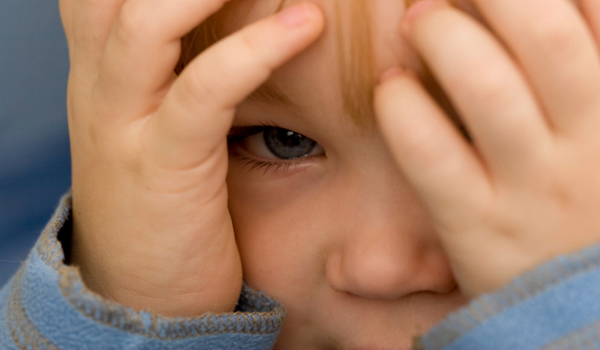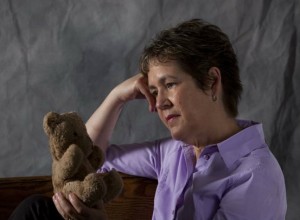
Parenting
Post Traumatic Stress Disorder in Babies and Toddlers: What Are the Symptoms?
Post-traumatic stress disorder (PTSD) is a reality for many babies and toddlers with special needs. That's the bad news. The good news is that effective treatments for PTSD exist, and they can be used with children as young as three. Before effective treatment can occur, the condition must first be correctly diagnosed. And for diagnosis to occur parents and health care professionals must be aware of the symptoms of PTSD.Behavior Reveals Symptoms of PTSD in Babies and Toddlers
PTSD symptoms manifest much differently in babies and toddlers than in older children, adolescents, and adults. Because babies are preverbal and toddlers' language development is limited, they can't verbalize their fears. They can't describe a nightmare or flashback. But the behaviors of infants and toddlers who have experienced significant trauma can offer clues that indicate the development of PTSD. By closely observing their behaviors, caring adults may notice symptoms related to PTSD.Symptoms of PTSD in Babies and Toddlers
What are some of the behavioral symptoms to look for?1. Hypervigilance
A baby who is tense, watchful, or on guard even when in a familiar, comfortable, and safe environment is hypervigilant. Adults often consider the behavior to be part of the child's personality. "He's an anxious child," we say. Or, "She's a worrier." But the behavior could be a symptom of PTSD.2. Separation Anxiety or Clinginess
Most babies go through a clingy period between the ages of 6 and 12 months. But when a baby is clingy from a much earlier age and whose separation anxiety persists into toddlerhood, the behavior may indicate the development of PTSD.3. Emotional distress when reminded of initial trauma
Infants and toddlers who have been traumatized remember preverbal trauma as visual images, sounds, smells, physical sensations, and emotions. When subjected to an environment that looks, sounds, smells, creates the same physical sensations, or evokes similar feelings, they often respond with emotional distress. If the emotional distress happens consistently when the child is exposed to that environment, it could be a symptom of PTSD.4. Fear or avoidance of places that remind them of event
Babies and toddlers are smart people. They want to get out of scary places that remind them of previous trauma. Our son had major surgery at birth and 7 more surgeries before he was 5. He's an adult now, but remembers going ballistic while being wheeled into surgery as a 5-year-old. He did everything he could to get off the gurney because he wanted to avoid the operating room.5. Trouble sleeping
This symptom is not about youngsters who don't need much sleep. It is about babies and toddlers who are afraid to be left alone in a room, who are terrified to fall asleep. They may be afraid of the dark, not just for a few weeks, but for months and months. When they begin talking, they are often convinced monsters live under their beds or in their closets.6. Nightmares
Of course, it's hard to know if a screaming baby was awakened by a nightmare, an empty stomach, diaper rash, or an ear ache. But if no physical reason exists for upsetting nocturnal awakenings, the behavior could be a PTSD symptom.7. Repetitive play
As a baby becomes a toddler and develops vocabulary, repetitive play may indicate the presence of PTSD. Not the repeated play necessary for a youngster to develop new skills. But play that continues or re-emerges over many months and even years. Play that repeats a scenario similar to a trauma you know or suspect happened. A child who was in a car accident playing car crash over and over. A child who was in tornado playing "hide in the basement" more than seems healthy. A child adopted from an orphanage constantly tying a doll to the bed.When to Seek PTSD Treatment for Babies and Toddlers
It's normal for children to exhibit some of these behaviors in the first weeks after a significant trauma occurs. But if the behaviors persist more than 3 months after the initial event, treatment may be needed. Once again, there's good news and bad news. The bad news is that treatment is difficult during the preverbal years. The good news is that treatment can be highly effective in children as young as three. To learn more about symptoms and treatment of PTSD in children, check out these resources:Books
- Trauma Through a Child’s Eyes by Peter A. Levine and Maggie Kline
- Trauma-Proofing Your Kids by Peter A. Levine and Maggie Kline
- The Boy Who Was Raised as a Dog: And Other Stories by Bruce Perry
- Different Dream Parenting: A Practical Guide to Raising a Child with Special Needs by Jolene Philo
- Wounded Children, Healing Homes: How Traumatized Children Impact Adoptive and Foster Families by Jayne Schooler
Websites
- Child Trauma Acadamy: www.childtrauma.org
- National Child Traumatic Stress Network: www.nctsnet.org
- Different Dream Parenting www.DifferentDream.com (Type "PTSD" in the search box)
- Intensive Trauma Therapy, Inc: www.traumatherapy.us



